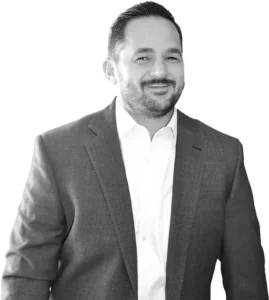Sports Fanatic
I’ve been a sports fan most of my life. I‘ll watch any sort of sport, from the Tour de France to the Olympic Games to Baseball. The athleticism, the competition, the historical moments; what’s not to love?
If I had to pick my top two favorite sports, it would probably be basketball and football. I could describe to you many attributes that differentiate these two sports. One has pads and full contact, while the other is more a game of finesse; one has an 82-game season, while the other has a 16-game season; one has a roster of 15 players, while the other has a roster of 53 players.
Again, two totally different sports, but I’d like to draw your attention to one unique difference between basketball and football. In football, you play either offense or defense. In basketball, you play offense and defense. A slight difference that’s often overlooked.
So, why does this matter? Well, in football, you know your role and purpose. Your duties are clearly defined – you either tackle or avoid being tackled. In basketball, these lines are much more blurred. You may be a specialist at defending or ball-handling, or shooting, but your responsibility is still to show up on both defense and offense. The allure of offense, making baskets, and being the superstar on the court, can sometimes create quite a distraction.
Today I will discuss why you should view your portfolio like a football team as opposed to a basketball team and how a “basketball team” portfolio can get you in trouble. If I’ve piqued your curiosity, read on…
Own it on Purpose; Own it with Purpose.
I review a lot of investment portfolios. This is often the first step in the diligence process with a potential new client. These portfolios are constructed by all sorts of different advisors – young and old, male and female, by advisors from all sorts of different geographies and backgrounds. I’ve always viewed investment portfolios like a puzzle, and I have a keen interest in understanding how all the puzzle pieces fit together.
During an initial review process, I ask a lot of “why” and “what” questions. “Why this investment?” or “What specific purpose is that investment serving?” I want to understand clearly what someone’s financial aspirations are. I know that an investment portfolio is meant to reflect the objectives of one’s financial plan. Therefore, there should be a rhyme or reason for every piece and part.
No fluff. That’s my rule. Everything has a role, a place, and a purpose. You own each investment on purpose and for a purpose.
Defense is Defensive & Offense is Offensive
We are living in a near-zero interest rate environment and have been for some time. This reality makes it very easy to differentiate between an offensive position or a defensive position. A “basketball” portfolio is made up of a collection of investments where the investor cannot clearly differentiate what each piece is intended for – the design is such that all investment positions are expected to play offense and defense. This is suboptimal and not a prudent way to manage one’s portfolio.
The “football” portfolio carries itself with the utmost clarity. Offensive positions are differentiated because they have a clearly defined expected return. One can dig into historical data and review current valuations to make educated assumptions about the long-term expected returns for these particular securities. Although we can’t forecast these estimates down to the decimal, we can set reasonable expectations within a range, and the dispersion of outcomes narrows over longer time horizons. The offense is about compound returns, and offense positions should be assessed accordingly.
On the defensive side of the ball, an investor should have clearly defined allocations that will help to provide a safety net or fallback plan if things don’t go exactly to plan. It should be of no surprise to you that markets are full of surprises. This is why you need a defense. As the adage goes, defense wins championships. There will be no championships awarded based on your investment success. Still, these defensive allocations will help you to survive and offer a cushion, a complimentary allocation to your offense side of the portfolio.
One should not assess their defense portion of the portfolio based on expected return metrics. Defense is to dilute the craziness of the offense investments. Yes, it will and should deliver some sort of return, but that is not its primary intended purpose. This may seem obvious, but just like basketball, those offense and defense expectations can often get blurred. When markets are raging forward, one asks why do I need any cash? Who needs any defense? And when markets are struggling, an investor’s desires and perspective shift to a more defensive posture.
Again, each part has a purpose, a place, and an objective that reveals what the expectation should be. No one asks the quarterback to take a few snaps as a defensive lineman. The thought of this is just laughable because, in football, those roles are clearly defined from the get-go, as they should be in your portfolio as well.
Practically Speaking…
So, what does this mean in practical terms? You should be able to parse your investments – position by position – into offense or defense. Once these roles are clearly defined, you can then try to incrementally improve on these positions. Improving the offense means ratcheting up the expected return by owning investments that meets your return targets and commingling these investments with a diverse group of strategies. Just as a football team approaches the game from the ground with a run game and the air with a passing game, you will have different investment approaches to help deliver the results you are targeting.
The defense is the same. Reviewing each part, understanding how defensive and stable these positions have been in historical times of calamity. Along with your ability to appreciate these positions, not for their “scoring capabilities” (expected returns), but rather the defensive characteristics that help ballast your portfolio. Attributes like liquidity that are often underappreciated are key to a healthy defense.
For example, cash is an underappreciated asset if it is always being measured against its offensive counterparts. Cash, liquidity, can provide some key benefits depending on one’s portfolio, goals, and perspective.
Fooled By Cleverness
In last week’s article, I titled one section “HODL” (Hold On for Dear Life). I spoke about how this crypto mantra is powerful for the crypto community because it helps them endure an incredibly volatile asset. I say this point without making a claim on cryptocurrency or revealing my personal opinions about the space. Simply stating that we need to equip ourselves with whatever psychological tools we can to help us stay the course – investing is an emotional exercise and one in which success depends on fortitude and temperament.
There is also a dark downside to these types of adages, and they can create false expectations. Much of what we discussed today on the offense side of the ball was about understanding expected returns and that an improving offense is to incrementally improve the odds of delivering those returns and improving on them. As mentioned, much of this work is done based on historical data and current valuations.
As an example, if you are trying to understand the makeup or attribution of historical stock returns, you would benefit from knowing that total stock market returns are driven by (a high correlation to) the growth of earnings/profits, dividends paid and received, and the inflating or deflating multiple investors are willing to pay for those company profits.
HODL can build a false expectation that prices will boomerang back to former highs if you just hold on. This is not true. Some successful technology companies that saw their stock prices skyrocket in the late 90’s have prices today that are still below that high watermark achieved some 20+ years ago.
This tension between your emotional fortitude and stick-with-it-ness and that key valuation work will be necessary for you to build your optimal offense. What went up doesn’t always return. As nice as that predictability might be, that just not the way it works.
So…
Do you know the players in your portfolio? How’s your defense? What are the expectations for your offense this year? Scouting any new recruits? What’s on the chopping block?
You and your advisor are coaching this portfolio, and this is a never-ending process. There is no “I’ve arrived moment,” the world is everchanging, your life is everchanging, and for this reason, you should always be nimble enough to pivot and course correct.
I’ll say it again, and end you with this, Own it on Purpose; Own it with Purpose.







